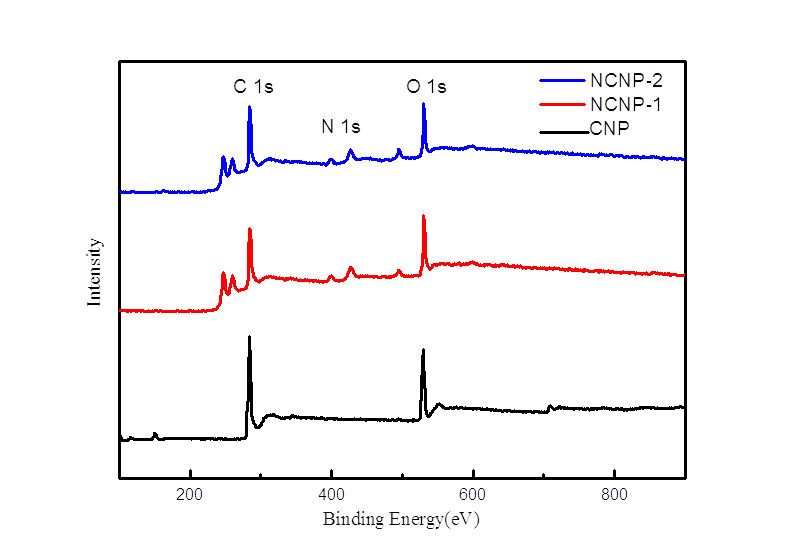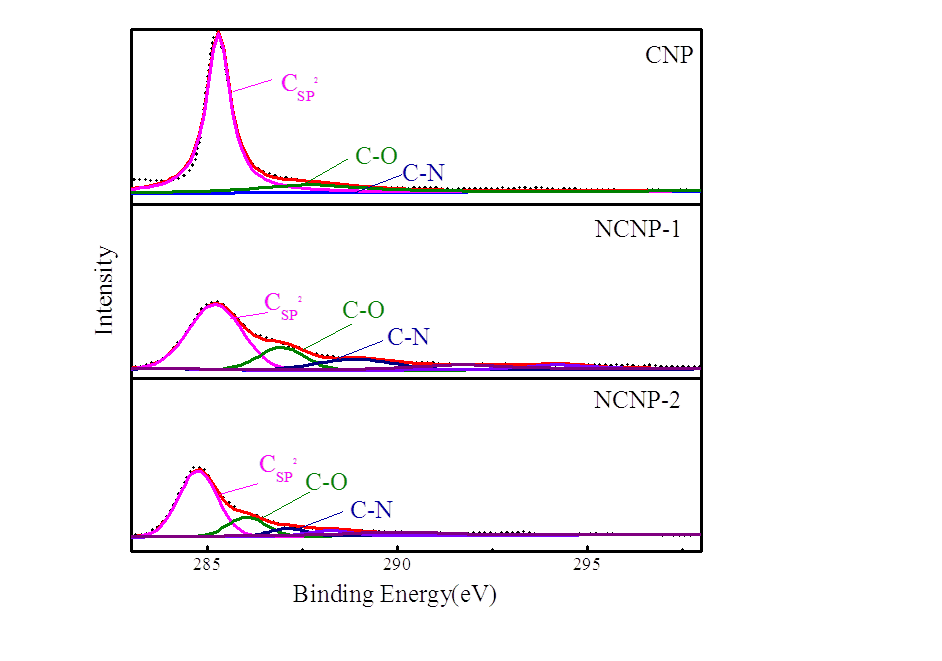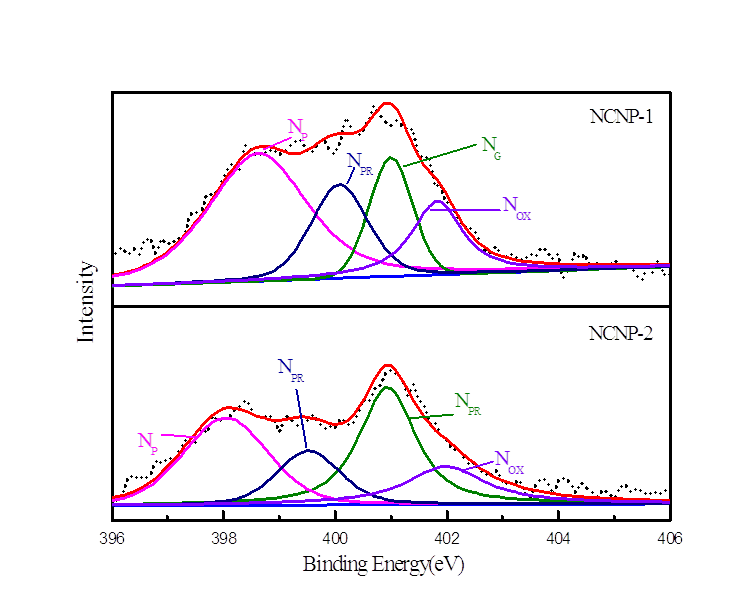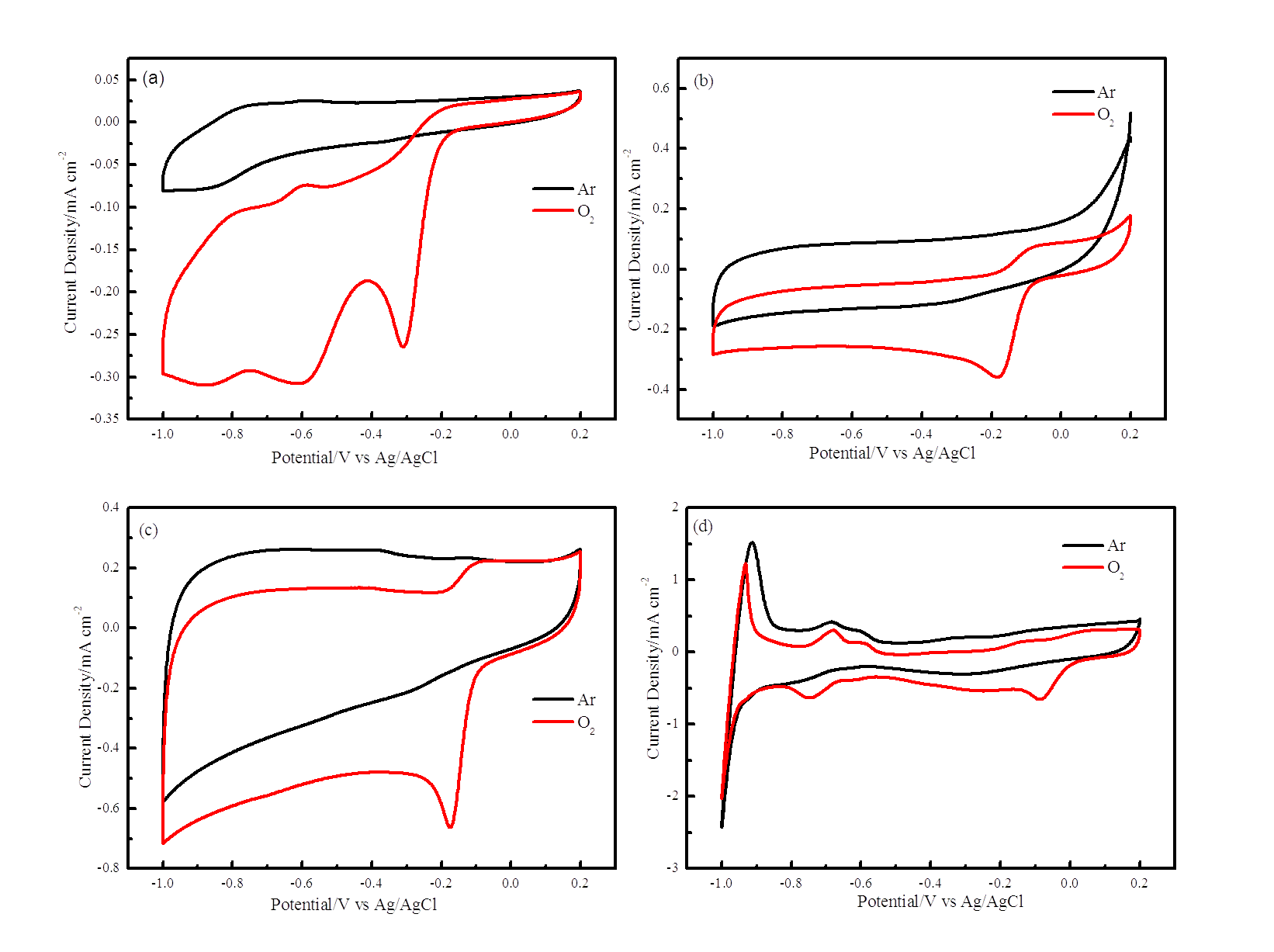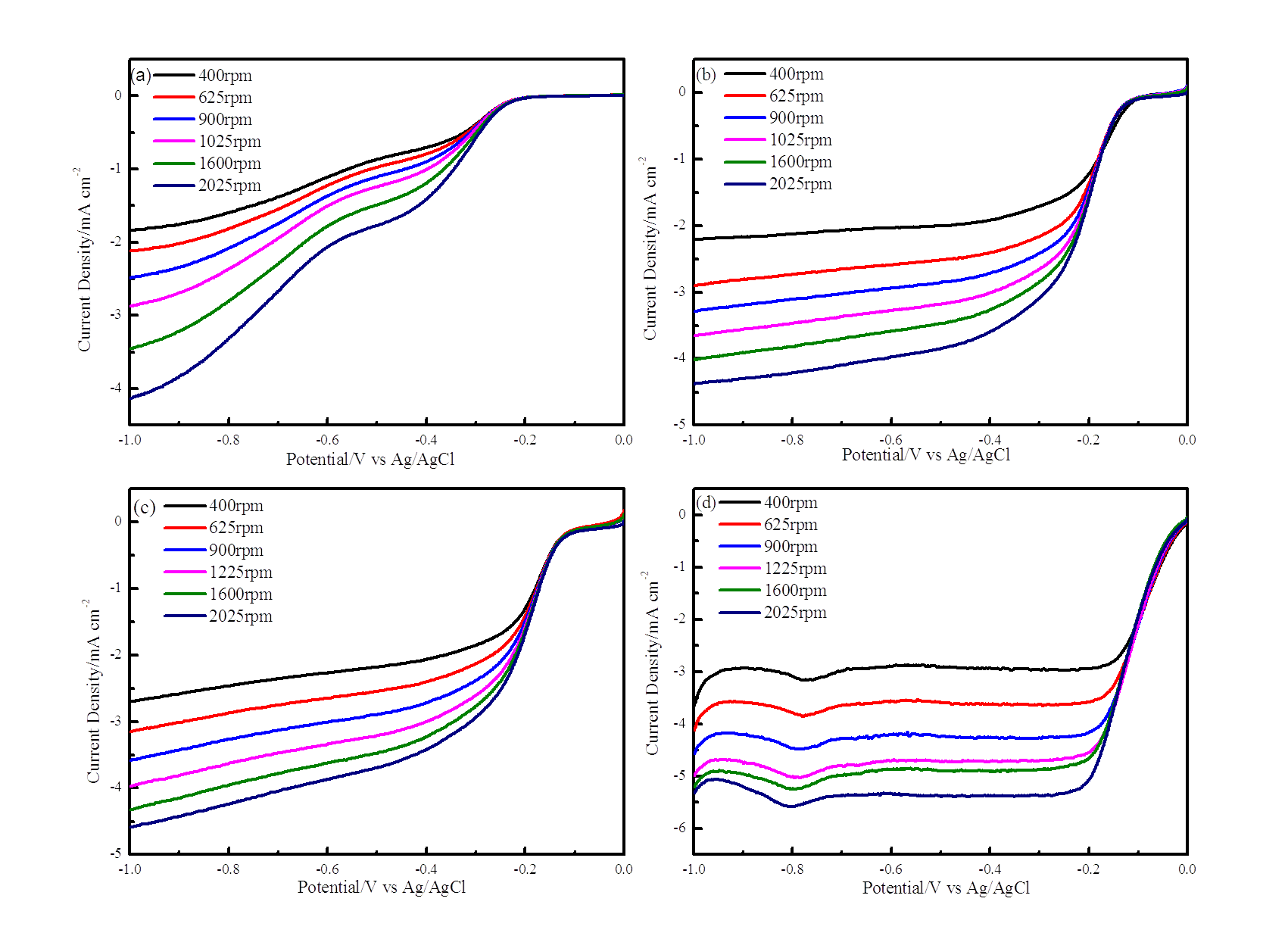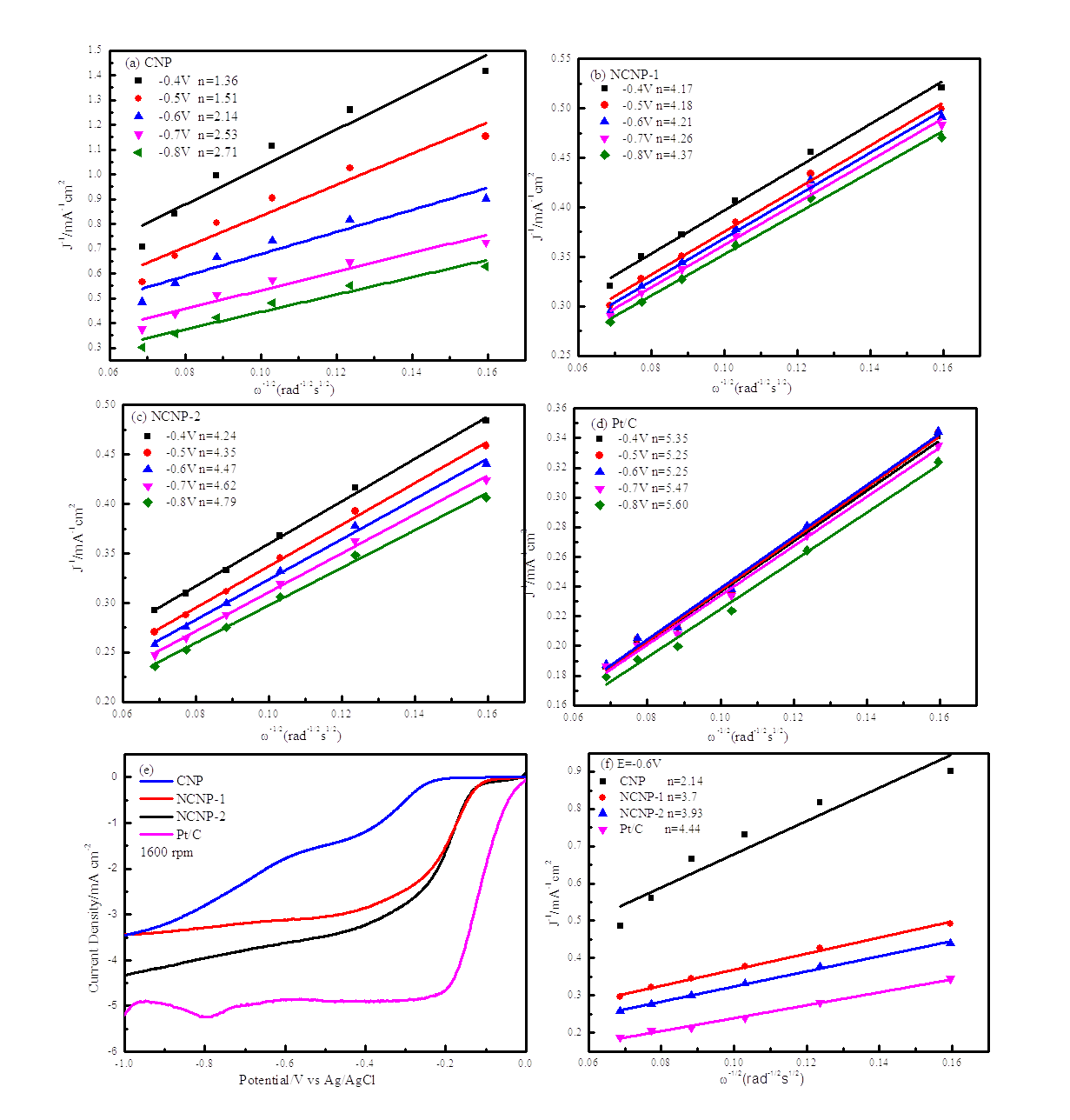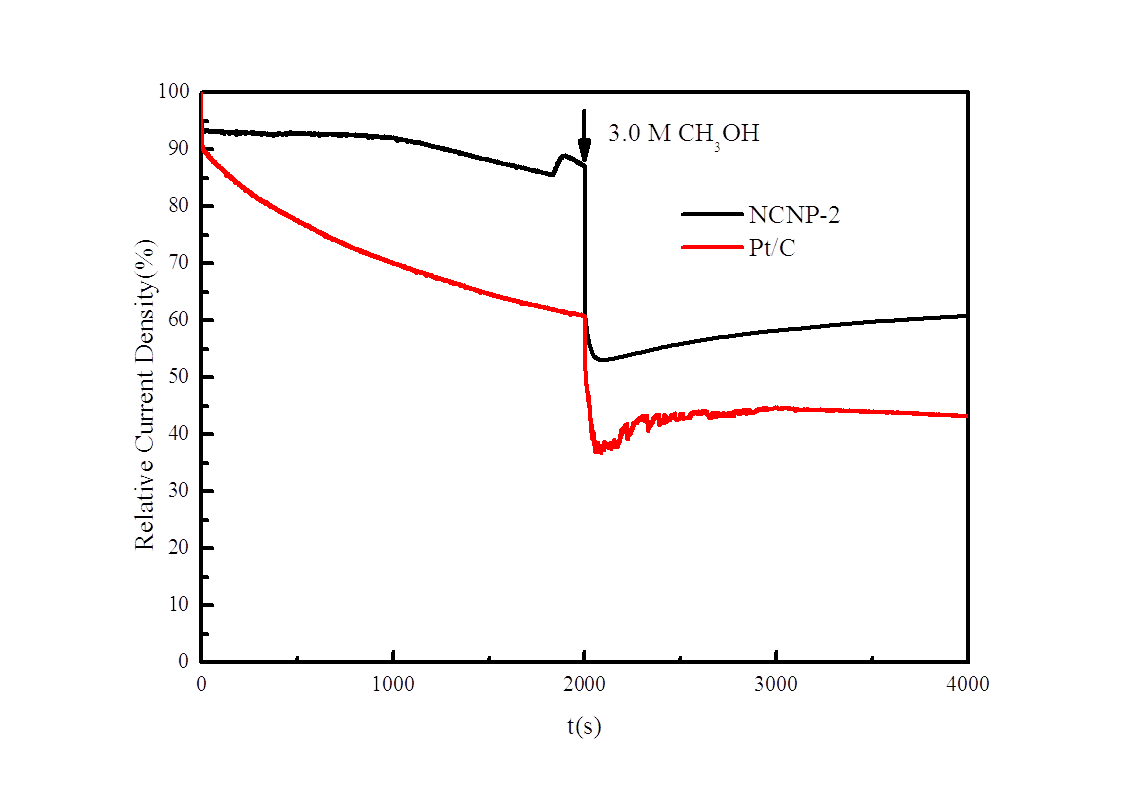溶液等离子体法制备杂原子掺杂碳材料及其电化学性能毕业论文
2020-04-25 19:46:47
摘 要
直接甲醇燃料电池(DMFC)因其能量转换效率高、操作简单、环境友好及安全可靠等优点受到了广泛的关注。而阴极催化剂的研究与发展直接影响着直接甲醇燃料电池的商业化进程。目前使用的铂基催化剂存在着铂价格昂贵成本高、抗甲醇能力差等问题。针对这些问题,通常使用不含金属的杂原子掺杂碳材料来提高性能。
本课题选用2-氰基吡啶和氰基吡嗪作为放电溶液,通过溶液等离子体工艺合成了无金属氮掺杂的碳纳米颗粒(NCNP)。有机前体的碳/氮摩尔比的差异导致了NCNP中氮掺杂含量的不同。对氧还原反应(ORR)的电化学评估表明,由2-氰基吡啶和氰基吡嗪合成的无金属氮掺杂碳材料在碱性溶液中具有优异的ORR活性。由氰基吡嗪放出的氮掺杂碳材料(NCNP-2)显示出最正的ORR峰值电位(-0.173 V vs Ag/AgCl),然后是由2-氰基吡啶放出的氮掺杂碳材料NCNP-1(-0.183V vs Ag/AgCl),由碳棒放出的碳材料CNP(-0.301 V vs Ag/AgCl)。NCNP在碱性条件下的起始电位和极限电流密度方面表现出显着提高。在恒电位下,计算得到的CNP,NCNP-1,NCNP-2的n值为2.14、3.7、3.93。这证实了CNP更倾向于二电子途径发生反应,而NCNP-2比NCNP-1更倾向于理想的四电子途径发生反应。以上结果表明,氰基吡嗪合成的NCNP-2的ORR催化性能最好。NCNP中石墨-氮和吡啶-氮位点有利于提高ORR活性和选择四电子途径发生氧还原反应。此外,与商用Pt /C相比,NCNP-2具有优异的抗甲醇能力。这种策略为设计和制备高性能直接甲醇燃料电池的阴极催化剂提供了一个很好的选择,为燃料电池和金属空气电池等其他相关的电化学装置提供了进一步发展的可能性。
关键词:氧还原反应 直接甲醇燃料电池 溶液等离子体法 氮掺杂碳材料
Preparation of Heteroatom Doped Carbon Materials by Solution Plasma Method and Its Electrochemical Properties
ABSTRACT
Direct methanol fuel cells (DMFC) have received extensive attention because of their high energy conversion efficiency, simple operation, environmental friendliness, safety and reliability, and the research and development of cathode catalysts directly affect the commercialization of direct methanol fuel cells. Platinum-based catalysts currently used have problems such as high cost, and poor resistance to methanol. For these problems, metal-free heteroatom doped carbon materials are often used to improve performance.
In this project, 2-cyanopyridine and cyanopyrazine were selected as the discharge solution, and metal-free nitrogen-doped carbon nanoparticles (NCNP) were synthesized by solution plasma process. The difference in the carbon/nitrogen molar ratio of the organic precursor results in a difference in the nitrogen doping content of the NCNP. Detailed electrochemical evaluation of the oxygen reduction reaction (ORR) showed that the metal-free nitrogen-doped carbon material synthesized from 2-cyanopyridine and cyanopyrazine had excellent ORR activity in an alkaline solution. The nitrogen-doped carbon material (NCNP-2) emitted from cyanopyrazine showed the most positive ORR peak potential (-0.173 V vs Ag/AgCl), followed by the nitrogen-doped carbon material evolved from 2-cyanopyridine. NCNP-1 (-0.183V vs Ag/AgCl), carbon material CNP (-0.301 V vs Ag/AgCl) released from carbon rods.NCNP showed a significant improvement in the starting potential and ultimate current density under alkaline conditions. At constant potential, the calculated CNP, NCNP-1, and NCNP-2 have n values of 2.14, 3.7, and 3.93. This confirms that CNP prefers the two-electron pathway to react, while NCNP-2 is more prone to the ideal four-electron pathway than NCNP-1. In summary, the NCNP-2 synthesized by cyanopyrazine has the best ORR catalytic performance. The graphite-nitrogen and pyridine-nitrogen sites in NCNP are beneficial for increasing ORR activity and selecting the four-electron pathway for oxygen reduction. In addition, NCNP-2 has excellent methanol resistance compared to commercial Pt /C. This strategy provides a good alternative for designing and preparing cathode catalysts for high performance direct methanol fuel cells, providing further development possibilities for other related electrochemical devices such as fuel cells and metal air cells.
Key words: oxygen reduction reaction;direct methanol fuel cell; solution plasma; nitrogen doped carbon material
目录
摘要 I
ABSTRACT II
目录 IV
第一章 绪论 1
1.1研究背景 1
1.2氧还原反应 3
1.3氮原子掺杂碳材料 4
1.4氮原子掺杂碳材料的制备方法 5
1.5溶液等离子体法 6
1.5.1 以金属电极作为原材料合成 7
1.5.2以合成溶液作为原料 7
1.6研究目的和内容 8
第二章 实验方案 9
2.1实验药品与实验仪器 9
2.1.1实验药品 9
2.1.2实验仪器 9
2.2 样品的制备 10
2.2.1氮掺杂碳材料的制备 10
2.2.2对比样碳材料的制备 10
2.2.3钴氮双掺杂碳材料的制备 11
2.2.4工作电极的制备 11
2.3 材料表征 11
2.3.1 X射线光电子谱分析 (XPS) 11
2.4电化学性能测试 11
2.4.1 ORR催化性能的表征 11
2.4.2旋转圆盘测试(RDE) 12
2.4.3抗甲醇性能和稳定性测试 12
第三章 杂原子掺杂碳材料催化剂的制备及其性能的表征 13
3.1NCNP的结构表征 13
3.2NCNP的电化学性能表征 15
3.2.1氧还原性能研究 15
3.2.2氧还原反应途径研究 16
3.2.3NCNP的抗甲醇能力研究 19
3.3钴氮双掺杂碳材料的电化学性能表征 20
第四章 结论与展望 22
4.1结论 22
4.2展望 22
参考文献 23
致谢 26
第一章 绪论
1.1研究背景
在现代社会中,能源推动着经济高速稳定地发展。但是,有限的化石燃料和高速增长的燃料消耗量之间的不平衡问题,使得各国政府和科研人员迫切想要寻求高效的新能源和提高现有化石燃料的利用率,只有新能源才能确保世界经济的稳定发展,满足人类日益增长的物质需求。与此同时,日益严重的环境污染问题让人类逐渐意识到保护环境的重要性,对于清洁能源的需求越来越大。上世纪人类建立的国际能源体系已经无法满足人类对于能源的要求。高效清洁和经济安全的能源体系才是21世纪人类所追求的目标。
从现代社会能源发展来看,在未来50年内,化石燃料占据了能源结构的主体部分,可再生能源和新能源只占据能源结构的少数部分。化石燃料在使用过程中除了转化效率低会导致能源浪费以外,还会产生大量有害物质和噪音。这严重污染了人类的生存和发展。进入21世纪以后,日益短缺的自然资源与日益严重的环境污染对现代社会来说是巨大的挑战,各国政府都在积极寻求可持续发展的方案,保护自然环境和资源。针对于此,环境最小负担和资源和能源最充分利用的概念被科学家们提出。而在这其中,研发清洁高效的新能源技术则是实现这两个概念的重要组成部分。燃料电池技术是21世纪以来各国都在积极发展推广的新技术,它是一种直接将燃料的化学能转化为电能的装置,不仅转化效率高且污染少。所以,清洁高效的燃料电池不仅能够有效地解决化石类燃料造成的环境污染问题,也可以缓解人类越来越紧张的能源危机[1]。目前,欧美、 日韩及我国政府对燃料电池都有相关的布局, 我国政府在“十五”期间便大力支持燃料电池的相关研究工作。在 2018 年对新能源汽车政府补贴大幅退坡的情况下,国家对燃料电池汽车的补贴仍然按照现有标准直至 2020 年,彰显出我国政府对燃料电池发展的重视和信心。
相关图片展示:
